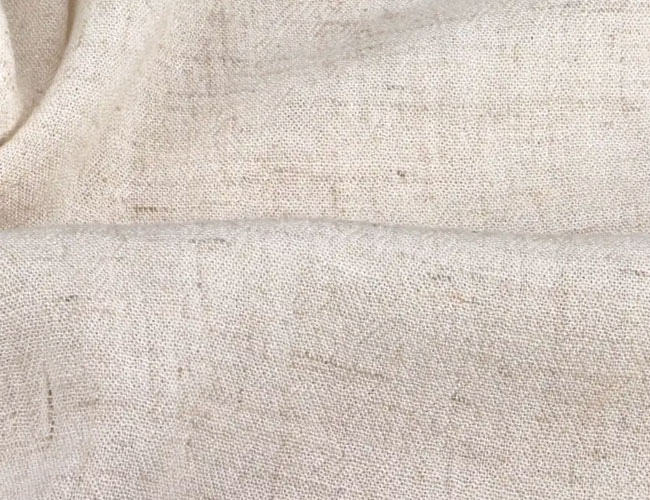
Blended fabric refers to a type of textile material made by combining two or more different types of fibers. These fibers are blended together during the manufacturing process to create a new fabric that possesses the combined characteristics of its constituent fibers. The goal of blending fibers is to improve the overall performance, appearance, and cost-effectiveness of the resulting fabric.
The most common type of blended fabric is a blend of natural fibers (e.g., cotton, wool, silk) with synthetic fibers (e.g., polyester, nylon, rayon). The combination of these fibers allows manufacturers to leverage the strengths of each type, while minimizing their weaknesses. For example, a blend of cotton and polyester can create a fabric that is soft and breathable like cotton, yet durable and wrinkle-resistant like polyester.
Blending fibers can also be done for specific functional purposes. For instance, moisture-wicking fabrics used in activewear often combine synthetic fabrics known for their moisture management properties with natural fibers for comfort.
The blending ratio of the fibers can vary, and it's common to see fabrics labeled with the percentage of each fiber in the blend (e.g., 60% cotton, 40% polyester). Blended fabrics offer a wide range of benefits, making them popular choices in various applications such as clothing, home textiles, upholstery, and more.
1. Improved Performance: Blending fibers with complementary properties can enhance the overall performance of the fabric. For example, combining the softness and breathability of natural fibers with the strength and durability of synthetic fibers results in a fabric that is both comfortable and long-lasting.
2. Enhanced Comfort: Blending fibers can improve the comfort level of fabrics. For instance, combining moisture-wicking synthetic fibers with natural fibers can create a fabric that draws moisture away from the skin, keeping the wearer dry and comfortable.
3. Wrinkle Resistance: Fabrics blended with certain synthetic fibers, such as polyester or elastane, tend to be more wrinkle-resistant than fabrics made solely from natural fibers.
4. Cost-Effectiveness: Blending expensive natural fibers with more affordable synthetic fibers can help reduce production costs while still maintaining desirable characteristics of the fabric.
5. Versatility: Blended fabrics can offer a wide range of properties, making them suitable for various applications and environments. They can be engineered to meet specific requirements, such as moisture management, insulation, or breathability.
6. Durability: Combining different fibers can increase the fabric's overall durability and resistance to wear and tear, extending its lifespan.
7. Color Retention: Some fibers may have better color retention properties than others. Blending fibers with excellent colorfastness can help the fabric maintain its vibrancy and appearance after multiple washes.
8. Eco-Friendly Options: Blending natural fibers with recycled or eco-friendly synthetic fibers can create sustainable fabrics with reduced environmental impact.
9. Easy Care: Blended fabrics may require less maintenance and care compared to fabrics made from 100% natural fibers, as they can be less prone to shrinking or stretching.
10. Aesthetic Appeal: Blending fibers can result in unique textures and appearances that may not be achievable with single-fiber fabrics. This can add visual interest and uniqueness to the fabric.
11. In summary, blending fabrics allows manufacturers to create materials that combine the best features of different fibers, offering consumers a wide range of fabrics tailored to meet their specific needs and preferences.
1. Polyester-Cotton (Poly-Cotton): This is one of the most popular blended fabrics. It combines the strength and wrinkle-resistance of polyester with the softness and breathability of cotton. Poly-cotton blends are durable, easy to care for, and commonly used in clothing and home textiles.
2. Cotton-Modal: Modal is a type of rayon made from beech tree fibers. Blending it with cotton results in a softer fabric, drapes well, and has enhanced moisture-wicking properties compared to pure cotton.
3. Cotton-Spandex (Cotton-Elastane): Adding spandex (or elastane) to cotton creates a stretchy fabric that offers comfort and flexibility. Cotton-spandex blends are commonly used in stretch jeans, activewear, and form-fitting garments.
4. Wool-Polyester: This blend combines the warmth and luxury of wool with the durability and wrinkle-resistance of polyester. Wool-polyester blends are often used in suits, coats, and other outerwear.
5. Acrylic-Wool: Blending acrylic with wool creates a fabric that is more affordable than pure wool and often mimics its appearance and warmth. Acrylic-wool blends are commonly used in knitwear and winter clothing.
6. Silk-Cotton: This blend combines the softness and sheen of silk with the breathability of cotton. It results in a luxurious fabric that is comfortable to wear in various climates.
7. Silk-Wool: Blending silk with wool adds strength and softness to the fabric, creating a luxurious textile suitable for suits, dresses, and eveningwear.
8. Rayon-Polyester: This blend combines the comfort and drape of rayon with the durability and quick-drying properties of polyester. It is often used in activewear, linings, and casual clothing.
9. Bamboo-Cotton: Bamboo fibers blended with cotton create a soft, lightweight fabric with moisture-wicking properties. It is often used in activewear, undergarments, and bed linens.
10. Hemp-Cotton: Blending hemp with cotton results in a fabric that is more durable and environmentally friendly than pure cotton. Hemp-cotton blends are often used in casual clothing and eco-friendly products.
1. Enhanced Performance: Blending different types of fibers allows manufacturers to combine the strengths of each fiber while minimizing their weaknesses. For example, blending natural fibers with synthetic fibers can create a fabric that is both soft and breathable like natural fibers, yet more durable and wrinkle-resistant like synthetic fibers.
2. Durability: Blended fabrics tend to be more durable and resistant to wear and tear compared to single-fiber fabrics. The combination of fibers can enhance the fabric's strength and longevity.
3. Cost-Effectiveness: Blending expensive natural fibers with more affordable synthetic fibers can help reduce production costs while still maintaining the desirable characteristics of the fabric.
4. Versatility: Blended fabrics offer a wide range of properties, making them suitable for various applications and environments. They can be engineered to meet specific requirements, such as moisture management, insulation, or breathability.
5. Color Retention: Some fibers in blended fabrics may have better color retention properties, resulting in vibrant and long-lasting colors.
6. Eco-Friendly Options: Blending natural fibers with recycled or eco-friendly synthetic fibers can create sustainable fabrics with reduced environmental impact.
7. Easy Care: Blended fabrics may require less maintenance and care compared to fabrics made from 100% natural fibers, as they can be less prone to shrinking or stretching.
8. Aesthetic Appeal: Blending fibers can result in unique textures and appearances that may not be achievable with single-fiber fabrics. This can add visual interest and uniqueness to the fabric, making it suitable for a wide range of fashion and design applications.
9. Customization: Manufacturers can tailor blended fabrics to meet specific needs, creating fabrics with specific performance characteristics to suit different industries and end-users.
10. Improved Comfort: Blended fabrics can provide a balance of comfort features. For instance, combining moisture-wicking synthetic fibers with natural fibers can create a fabric that draws moisture away from the skin, keeping the wearer dry and comfortable.
11. Wrinkle Resistance: Fabrics blended with certain synthetic fibers, such as polyester or elastane, are often more wrinkle-resistant, making them easier to care for and maintain their appearance.
Blended fabrics are made by combining two or more different types of fibers to create a new fabric that exhibits the desirable characteristics of each individual fiber. This blending process allows manufacturers to produce fabrics with enhanced properties that are not achievable with a single fiber type alone. Commonly blended fabrics include cotton-polyester, cotton-modal, wool-polyester, and many others.
The blending process can be done at various stages, including during fiber production, yarn formation, or fabric manufacturing. Here's a general overview of how blended fabrics are made:
1. Fiber Selection: The first step is to select the fibers that will be blended together. Each fiber contributes specific characteristics to the final fabric, such as strength, softness, breathability, moisture-wicking ability, and more. 2. The choice of fibers depends on the intended use of the fabric and the desired properties.
3. Fiber Preparation: The selected fibers are thoroughly cleaned, processed, and sometimes dyed to achieve the desired color. This step is essential to ensure that the fibers are free from impurities and ready for blending.
4. Blending: The fibers are then combined in predetermined ratios to create a homogeneous blend. The blending process can be mechanical, where the fibers are mixed together using machines like carding machines or picker machines. Alternatively, chemical methods can be used to combine certain types of fibers.
5. Yarn Formation: After blending, the mixed fibers are spun into yarns using spinning machines. The yarns produced from blended fibers will now have a combination of properties from each fiber type.
6. Fabric Manufacturing: The blended yarns are then used to produce fabrics using various weaving, knitting, or other fabric manufacturing techniques. The resulting fabric will have a unique set of characteristics derived from the blend of fibers.
7. Finishing: Once the fabric is manufactured, it may go through additional finishing processes to enhance specific properties, such as softness, wrinkle resistance, or water repellency.
Blended fabrics offer a range of benefits, such as improved durability, reduced shrinkage, better moisture management, and enhanced comfort. Manufacturers can tailor the blend to suit specific applications, making blended fabrics widely used in various industries, including fashion, sportswear, home textiles, and industrial applications.
The choice between cotton and blended fabric depends on the specific requirements and intended use of the fabric. Both cotton and blended fabrics have their own set of advantages and disadvantages. Let's compare them to help you understand which might be better suited for different situations:
1. Cotton Fabric:
1). Advantages:
a. Soft and comfortable: Cotton is a natural fiber known for its softness and comfort, making it ideal for clothing and bedding.
b. Breathable: Cotton fabrics allow air to circulate, making them suitable for warm weather and active wear.
c. Absorbent: Cotton can absorb and retain moisture, keeping the wearer dry and comfortable.
d. Hypoallergenic: Cotton is generally hypoallergenic and less likely to cause skin irritation or allergies.
e. Biodegradable: Cotton is a renewable and biodegradable material, making it more eco-friendly.
2). Disadvantages:
a. Wrinkles easily: Cotton fabrics tend to wrinkle easily and require ironing to maintain a smooth appearance.
b. Shrinkage: Cotton fabrics can shrink when washed and dried at high temperatures.
c. Color fading: Brightly colored cotton fabrics may fade over time with repeated washing and exposure to sunlight.
d. Less durable: Pure cotton fabrics may not be as durable as blended fabrics, especially for certain uses like heavy-duty workwear.
2. Blended Fabric:
1). Advantages:
a. Enhanced properties: Blending different fibers can create fabrics with combined characteristics, such as improved strength, wrinkle resistance, or moisture-wicking ability.
b. Reduced shrinkage: Blended fabrics often have reduced shrinkage compared to pure cotton fabrics.
c. Increased durability: Some blends can be more durable and long-lasting than pure cotton fabrics.
d. Wrinkle resistance: Certain blends can be less prone to wrinkling, reducing the need for ironing.
e. Cost-effective: Blended fabrics can sometimes offer a more affordable option than pure fabrics while still maintaining desirable qualities.
2). Disadvantages:
a. Potential for decreased breathability: Depending on the blend, some fabrics may lose the breathability and comfort associated with pure cotton.
b. Allergic reactions: Certain blends may include synthetic fibers that can cause allergies or skin irritations in some individuals.
c. Environmental impact: Blended fabrics may not be as eco-friendly as pure cotton, particularly if they contain synthetic fibers that are not biodegradable.
d. Ultimately, the better choice between cotton and blended fabric depends on your specific needs and preferences. For everyday wear and comfort, pure cotton fabrics are popular choices. Blended fabrics are often preferred for specialized applications where specific performance characteristics are required, such as in sportswear, workwear, or outdoor clothing. When considering the environmental impact, pure cotton is generally more sustainable, but some eco-friendly blended fabrics are also available, incorporating recycled fibers or more sustainable materials.
The sustainability of synthetic blended fabrics depends on various factors, including the types of synthetic fibers used, the blend ratio, the production processes, and the end-of-life disposal options. Synthetic fibers are derived from petrochemicals and are not biodegradable, which raises concerns about their environmental impact. However, some efforts have been made to improve the sustainability of synthetic blended fabrics in recent years.
1. Environmental Impact of Raw Materials: Synthetic fibers like polyester, nylon, and acrylic are derived from non-renewable resources, primarily petroleum. The extraction and processing of these materials can have significant environmental impacts, including greenhouse gas emissions and pollution.
2. Energy and Water Consumption: The production of synthetic fibers and blended fabrics often requires substantial energy and water usage. High energy consumption contributes to carbon emissions and further strains natural resources.
3. Microfiber Pollution: Synthetic fibers shed microplastics during use and washing, which can find their way into water bodies and harm marine life. This is a growing concern for the environmental impact of synthetic textiles.
4. End-of-Life Disposal: Blended fabrics can be challenging to recycle due to the combination of different fiber types. Disposing of synthetic textiles in landfills can contribute to long-term environmental problems.
5. Sustainable Initiatives: Some textile manufacturers are working on developing more sustainable synthetic fibers, including recycled polyester (rPET) made from post-consumer plastic bottles. Additionally, efforts are being made to create bio-based synthetic fibers derived from renewable sources like corn or sugarcane.
6. Extended Product Lifespan: Blended fabrics that are durable and long-lasting can be considered more sustainable, as they reduce the need for frequent replacements and lower overall consumption.
7. Circular Economy: Initiatives to promote recycling and circularity in the fashion industry can help mitigate the environmental impact of synthetic blended fabrics. Technologies are being explored to separate and recycle different fibers from blended fabrics.
8. Certifications: Look for certifications like the Global Recycled Standard (GRS) and the Bluesign system, which indicate more sustainable practices and materials in the textile supply chain.
While synthetic blended fabrics may not be as environmentally friendly as natural fibers like organic cotton or hemp, ongoing research and development efforts are striving to make them more sustainable. As a consumer, you can contribute to sustainability by choosing durable, high-quality garments made with eco-friendly practices, proper care to extend their lifespan, and responsible disposal or recycling options when they are no longer wearable.
G&F GROUP INC. is your best fabric supply partner.
We are committed to providing the highest quality fabrics to meet your needs, whether you are a fashion brand, home furnishing manufacturer or industrial application customer. Our extensive product line covers a wide range of fabric types including, but not limited to, cotton, polyester, nylon, silk, linen, and blends. Whether you are looking for comfortable and soft fabrics, durable technical fabrics with outstanding performance, or high-end fabrics with unique textures, we can meet your needs.
All Rights Reserved: https://www.groupgf.com/info-detail/blended-fabrics
Copyright Notice: This is an original (translated) article from G&F Group Inc., please indicate the source from G&F GROUP INC... If there is any infringement, please contact us first.
 Techtextil & Texprocess Rounded Off
Techtextil & Texprocess Rounded Off
 Nonwovens in daily life ----- filtration
Nonwovens in daily life ----- filtration
 Nonwovens in daily life ----- automotive
Nonwovens in daily life ----- automotive
 What is SAP – superabsorbent polymers
What is SAP – superabsorbent polymers